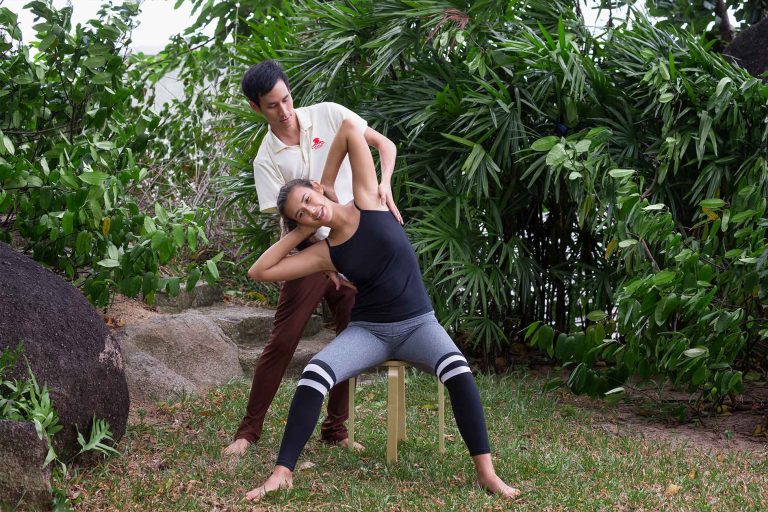6 Strategies for Improving Your Blood Circulation
Ensuring optimal blood circulation is paramount for overall health and well-being. A robust circulatory system is the key to delivering essential nutrients and oxygen to every part of the body while efficiently removing waste products. If you’re looking to enhance your blood circulation, consider researching various strategies that can easily be incorporated into your daily routine. However, you need to be careful about adding certain activities to your day, especially if you have underlying health conditions. For instance, start with small, manageable changes like taking short breaks to stretch during work hours or choosing stairs over elevators, gradually building up to more intensive exercises.
1. Exercise Regularly: Elevate Your Cardiovascular Health
Engaging in regular exercise is one of the most effective ways to boost blood circulation. Cardiovascular workouts, such as brisk walking, jogging, cycling, or swimming, stimulate the heart to pump blood more efficiently. This helps to clear out arteries and veins, reducing the risk of blood clots and enhancing overall circulation. Aim for at least 30 minutes of moderate-intensity exercise most days of the week to keep your circulatory system in top shape. Additionally, consider incorporating strength training into your routine to build muscle, which can contribute to better blood flow.
2. Stay Hydrated: Nourishing Your Body’s Transport System
Proper hydration is fundamental for maintaining optimal blood viscosity, ensuring your blood flows smoothly through the vessels. Dehydration can lead to thicker, stickier blood, making it harder for the heart to pump and slowing down circulation. Make it a habit to drink an adequate amount of water throughout the day, and consider incorporating hydrating foods, such as fruits and vegetables, into your diet. Carry a reusable water bottle with you as a reminder to stay hydrated, especially if you have a busy schedule, and be mindful of your body’s thirst signals. In addition, try infusing your water with slices of citrus or cucumber for a refreshing twist, making it more enticing to meet your daily hydration goals.
3. Adopt a Balanced Diet: Fueling Your Circulatory System
The food you consume plays a significant role in determining the health of your circulatory system. A balanced diet rich in nutrients like omega-3 fatty acids, antioxidants, and vitamins can contribute to improved blood circulation. Include foods such as fatty fish, berries, leafy greens, and nuts in your meals to promote heart health and maintain the flexibility of your blood vessels. Limit your intake of processed foods and excessive salt, as these can contribute to high blood pressure and hinder optimal circulation. Moreover, incorporating garlic into your diet can provide additional benefits, as it is believed to help lower blood pressure and improve blood flow.
4. Manage Stress: Unwind for Better Blood Flow
Chronic stress can have detrimental effects on your circulatory system, leading to increased blood pressure and a higher risk of cardiovascular problems. Incorporate stress-management techniques into your daily routine, such as meditation, deep breathing exercises, or yoga. These practices can help relax your blood vessels, promoting better blood flow and reducing the strain on your heart. Prioritize self-care activities and create dedicated time for relaxation to counterbalance the demands of daily life. Furthermore, consider engaging in activities that bring you joy, whether it’s reading, spending time in nature, or pursuing a hobby. These positive experiences can contribute to overall stress reduction and improved circulatory health.
5. Compression Socks: Enhancing Circulation with Supportive Wear
For those seeking additional support in improving blood circulation, compression socks for men and women can be a valuable asset. These specialized socks apply gentle pressure to the legs, aiding in the efficient return of blood to the heart. They can be particularly beneficial for individuals who spend long hours sitting or standing, as they help prevent blood pooling in the lower limbs. Consider integrating compression socks into your wardrobe to provide your circulatory system with extra assistance. Look for socks with graduated compression, as they apply more pressure at the ankles and gradually decrease towards the top, facilitating optimal blood flow.
6. Quit Smoking: Breaking Free from Circulatory Constrictions
Smoking is a major contributor to poor blood circulation. The chemicals in tobacco smoke can damage blood vessels, leading to atherosclerosis and reduced blood flow. By quitting smoking, you not only improve your overall health but also allow your circulatory system to recover. If you’re struggling to quit, seek support from friends, family, or a smoking cessation program to enhance your chances of success. Consider replacing smoking with healthier habits, such as taking short walks when cravings arise, to further support your journey to better circulatory health.
Nurturing Your Circulatory Vitality
Optimizing blood circulation is a multifaceted endeavor that involves adopting a holistic approach to your lifestyle. Regular exercise, proper hydration, a balanced diet, stress management, compression socks, and quitting smoking are all integral components of a strategy aimed at enhancing circulatory health. Remember, small changes can yield significant benefits for your circulatory system and your long-term health. Additionally, getting an adequate amount of quality sleep each night is crucial for circulatory health. This allows your body to repair and rejuvenate, supporting overall cardiovascular function. By incorporating these practices into your daily routine, you can promote the efficient flow of blood throughout your body, fostering overall well-being and vitality.







